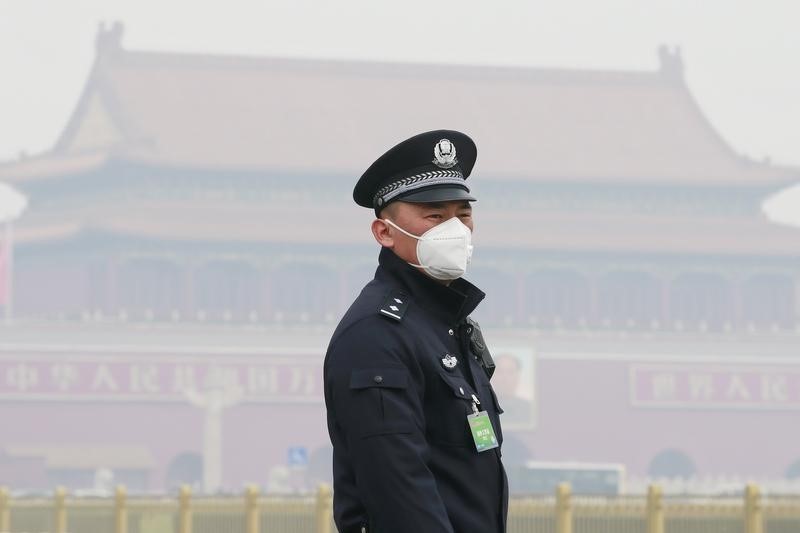Image: A policeman, wearing a mask to protect from severe pollution, secures the area near the Great Hall of the People before the opening session of the Chinese People’s Political Consultative Conference (CPPCC) in Beijing, March 3, 2016. REUTERS/Kim Kyung-Hoon/File Photo
By Shadia Nasralla
VIENNA (Reuters) – A global agreement on cutting the use of hydrofluorocarbons (HFCs) – potent greenhouse gases used in aerosols, refrigerants and air conditioning – seems within grasp, delegates said on Sunday after ten days of talks on climate change in Vienna.
A final deal is expected to be reached at a meeting in October in Kigali, Rwanda. If successful, it would be the biggest single measure to limit global warming since governments adopted the Paris Agreement last December, seeking to limit heat waves, floods, droughts and rising seas.
At the Vienna talks, the last before the Kigali meeting, almost 200 countries convened to lay the groundwork for such a deal, hammering out details and timetables for almost eliminating the use of HFCs.
“At the (conference) in Vienna the basis was reached today, in the early hours of Sunday, for a political agreement on the sustainable reduction of climate-damaging gases,” Austria’s Environment Minister Andrae Rupprechter said in a statement.
“The text that has been worked out … should be conclusively decided on … in October in Kigali. This decision is a milestone for the reduction of climate-damaging gases,” he added, echoing the U.S. Environmental Protection Agency (EPA).
U.S. Secretary of State John Kerry was among those who took part in high-level talks on Friday.
Under the current draft of the agreement, rich nations would get a target of almost eliminating HFCs by the 2030s, while poorer nations – which may struggle with the high costs of shifting to new technologies – would get a decade or so longer.
“The odds are very high for a deal in Kigali,” David Doniger of the U.S. Natural Resources Defense Council told Reuters.
Developing nations would also get financial support from nations led by the United States and the European Union. India was the least ambitious among major nations, favouring a freeze on growth in HFCs only in 2031.
“This single step could avoid up to 0.5 degrees Celsius (0.9 Fahrenheit) of warming by 2100,” the EPA said of cutting the use of HFCs.
Clare Perry of the Environmental Investigation Agency, a U.S.-based non-governmental organization, said countries are moving in the right direction but there is a huge amount of work to be done before October.
“Discussions on the HFC schedule for developed countries lacked the ambition we expect,” she said.
Paris set a goal of phasing out greenhouse gas emissions by 2100, mainly by shifting away from fossil fuels, and a target of limiting a rise in average global surface temperatures to “well below” 2C above pre-industrial times.
Temperatures this year are on track to be the warmest on record, eclipsing 2015, according to the World Meteorological Organization. Temperatures are already about 1C above pre-industrial times.
The HFC talks are part of the 1987 Montreal Protocol, which succeeded in slashing the use of chlorofluorocarbons (CFCs) to help protect the ozone layer, which shields the planet from ultraviolet rays that can cause skin cancer.
But the HFCs that have often replaced them, while better for the ozone layer, are greenhouse gases thousands of times more potent than carbon dioxide.
“These negotiations narrowed gaps on key issues like the HFC phase-out timetables, creating strong momentum for Kigali,” said Paul Bledsoe, a former Clinton White House climate adviser attending the talks.
(With extra reporting by Valerie Volcovici in Washington and Alister Doyle in Oslo; Writing by Alister Doyle; Editing by Andrew Bolton)
Copyright 2015 Thomson Reuters. Click for Restrictions.


